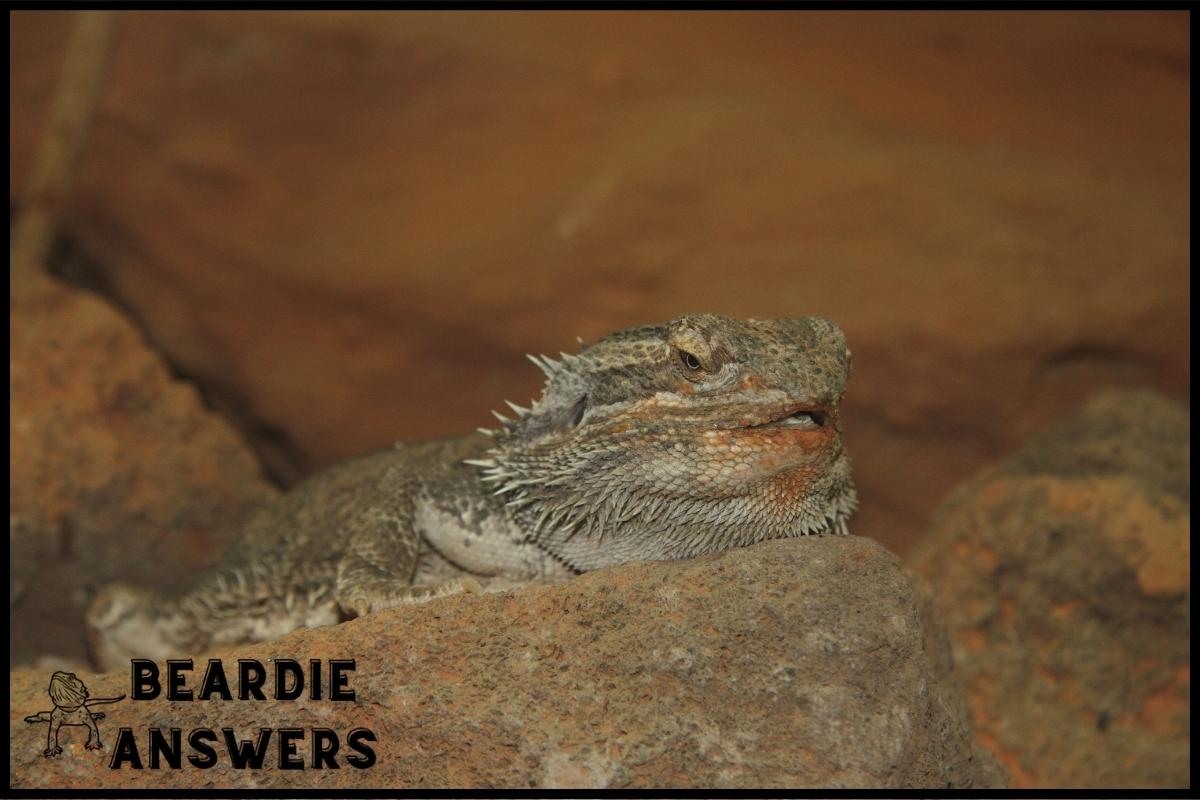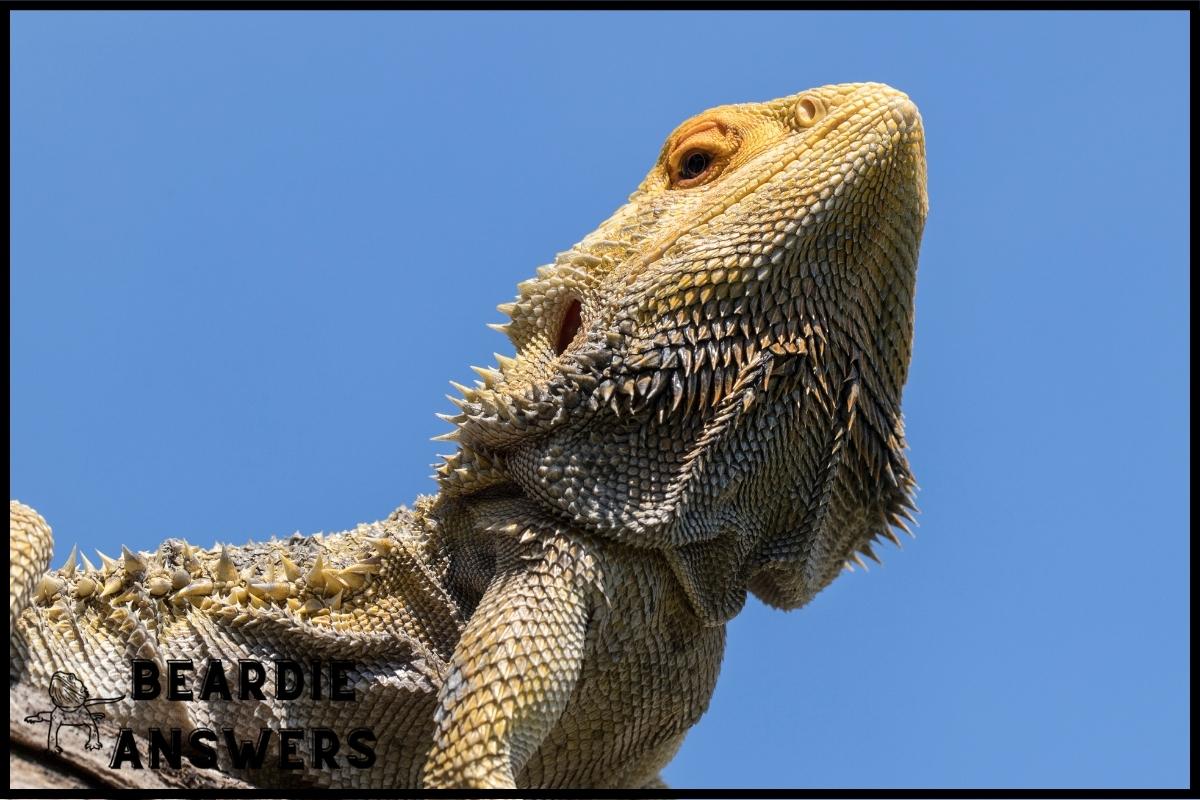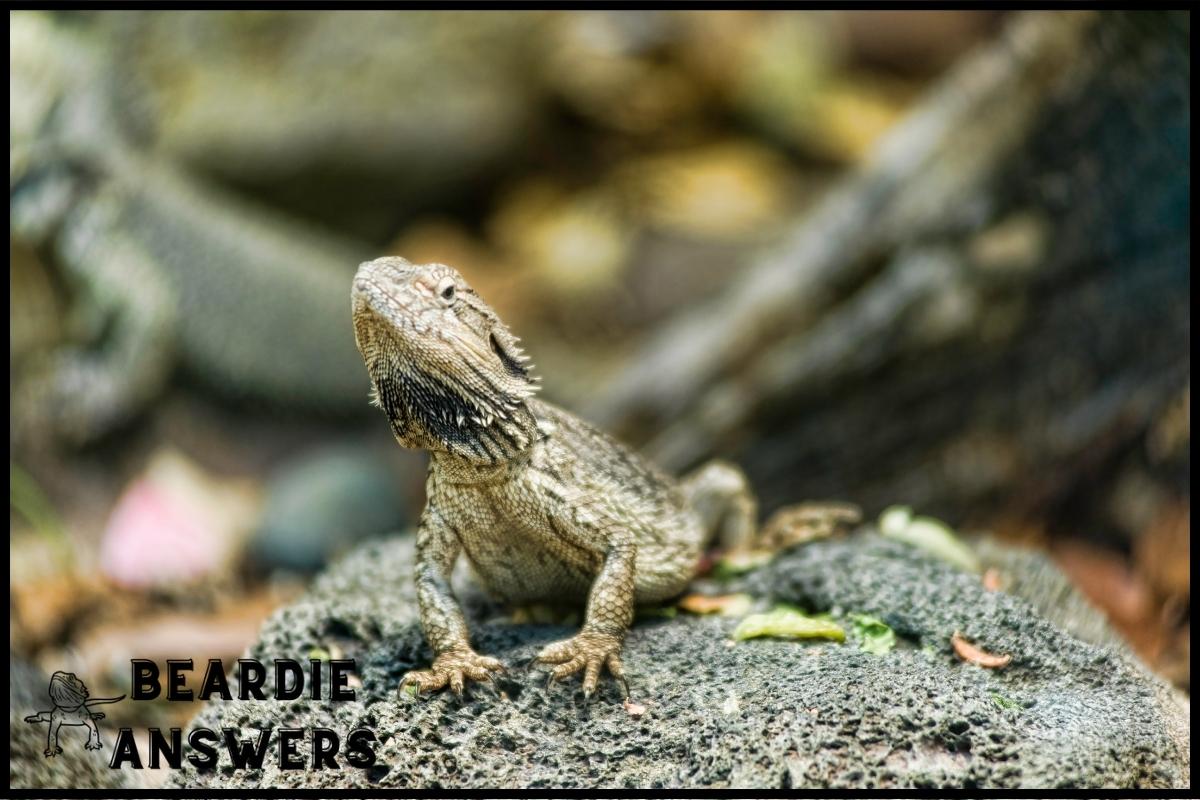As bearded dragons grow, their dietary and environmental needs change. It’s important to provide appropriate enclosure size, temperature, and lighting, as well as a balanced diet consisting of insects, vegetables, and fruit. It’s also important to monitor their growth rate to ensure they are healthy.
What You'll Learn
Stages Of Bearded Dragon Growth
Growing a bearded dragon is like watching a caterpillar turn into a butterfly. Bearded dragons go through several growth stages, starting from hatchling and ending with adult. During this process, their feeding habits and breeding cycles change significantly.
At the start of their lives, baby bearded dragons are only about 4-5 inches long and weigh less than 10 grams, but they quickly grow to become twice as large within just one month. As they progress further in age, they will reach more mature sizes ranging between 16-20 inches at adulthood.
Behaviors of baby bearded dragons can differ based on gender, size and even genetics; however there are some common behaviors that all owners should be aware of when caring for these creatures.
Behaviors Of Baby Bearded Dragons
Let’s talk about feeding habits and social interactions of baby bearded dragons.
We’ll look at how their behavior changes as they grow up and what we can do to make sure they get the right nutrition and interaction.
Feeding Habits
Baby Bearded Dragons, or hatchlings, have very different dietary requirements than their adult counterparts. They need more protein and calcium in order to grow and thrive in their habitat needs. Their diet should consist of small insects such as crickets, mealworms, super worms and roaches.
In addition, they will also benefit from a variety of greens like collards and mustard greens for fiber. It is important to dust these meals with calcium supplement twice a week to ensure proper growth.
With the right care and nutrition baby bearded dragons can reach adulthood quickly!
Social Interactions
When it comes to social interactions, baby bearded dragons have their own unique way of communicating with one another.
They use body language and subtle communication cues like head bobbing or tail twitching to express themselves.
Baby beardies also form small social dynamics based on the age, size, and gender of those in the group.
As they grow older these groups can become more complex as they learn how to interact better with other species.
With proper care and understanding, owners can encourage positive social behaviors among young dragon hatchlings.
Knowing how your little ones communicate is key for creating a healthy environment that encourages growth and development.
Differences Between Juvenile And Sub-Adult Bearded Dragons
Juveniles and sub-adults are the two stages of bearded dragon growth that occur between hatchlings and adults.
While both age groups require similar dietary requirements, there is a notable difference in their enclosure size needs.
Juvenile dragons usually live in smaller enclosures as they have not yet reached full maturity.
On the other hand, sub-adult dragons need larger enclosures to accommodate their growing bodies and provide more space for movement.
Furthermore, juvenile dragons may be kept together while sub-adults should generally be housed separately due to territorial behavior at this stage of life.
As such, it’s important to consider these differences when preparing an environment for your pet dragon.
With proper care, including providing adequate nutrition and housing conditions, beardies can easily reach adulthood; the next step on our journey into understanding the bearded dragon lifespan.
The Adult Bearded Dragon Lifespan
Once a bearded dragon reaches the sub-adult stage, they are ready to move on to becoming an adult. To successfully make this transition, it’s important that their housing requirements and temperature control are properly managed.
Adult bearded dragons need larger enclosures with adequate ventilation and plenty of space for basking and hiding spots. The temperatures should be slightly higher than those in juvenile habitats as adults require more heat during digestion. UVB lighting is also necessary for proper metabolic functioning and calcium absorption.
The lifespan of an adult bearded dragon depends largely on how well these environmental needs are met. In captivity, if provided with optimal care, a healthy beardie can live up to 10 years or longer. Improper diet, inadequate nutrition, and poor husbandry practices can shorten their lives significantly.
It’s also essential to remember that stress levels must remain low by avoiding rough handling or overcrowding within the habitat. Nowadays there is much information available about bearded dragon care which helps new owners understand what they need to do in order provide the best possible environment for them to thrive.
Understanding all of these factors will help ensure your pet enjoys a long life filled with health and vitality! With knowledge comes power so learning everything you can about caring for your beloved reptile friend is key when it comes time to deciding whether or not having one is right for you.
Moving forward into the next section let’s discuss some of the major influences that affect a young beardies growth rate such as genetics and dieting habits.
Factors Influencing Bearded Dragon Growth
Have you ever wondered what determines the rate of growth for a bearded dragon? It turns out that there are several factors that influence their growth, from dietary requirements to environmental conditions.
Let’s take a closer look at these important elements:
- Dietary Requirements – Bearded dragons need a balanced diet in order to grow and thrive. This includes high-quality protein sources such as insects and vegetables, plus necessary vitamins and minerals found in commercial supplements.
- Environmental Conditions – The temperature and humidity levels of the enclosure must be kept within acceptable ranges in order to ensure proper digestion and absorption of nutrients by the bearded dragon. A basking spot should also be provided so they can get enough heat during the day which is essential for metabolism.
It’s clear that both nutrition and environment play an important role when it comes to optimizing your beardie’s growth rates. To ensure your pet remains healthy, make sure that their habitat meets all of their needs while providing them with a varied but nutritious diet.
Tips For Optimizing Bearded Dragon Growth Rates
Optimizing the growth rate of your bearded dragon requires proper temperature control and habitat setup. Temperature plays a critical role in how quickly a beardy grows, so providing an optimal environment is essential. This can be done by setting up basking spots that reach between 95-100 degrees Fahrenheit, with cooler temperatures on one side of the tank for thermoregulation.
Additionally, it’s important to make sure there is plenty of UVB lighting available for vitamin D3 synthesis.
Bearded dragons also need space to move around and explore as they grow older. Setting them up in spacious tanks or enclosures allows them to feel secure while still having enough room to roam around. Adding lots of live plants, branches and rocks will provide enrichment opportunities and help keep the enclosure looking naturalistic. It’s best to avoid using sand or other loose substrates since these can cause impaction if ingested.
Regular feeding is essential too; offering high quality food such as crickets, worms, fruits and vegetables at least once per day will ensure your beardy gets all the nutrients necessary for healthy development. Supplementing their diet with multivitamins is recommended too so they receive a balanced range of vitamins and minerals needed for optimal health and growth.
Conclusion
Bearded dragons are a symbol of growth and change.
From the moment they hatch, to when they reach adulthood – their life is full of transformation.
As an owner, it’s important to be mindful of this process, giving them the proper nutrition and environment for optimal growth.
By providing these things we can watch our pets progress from hatchlings into beautiful adults; a reminder that no matter how large or small something may seem, there is always potential for great development ahead.
As we guide them through these stages of life, bearded dragons become more than just animals in our care – they become symbols of hope and faith in the power of growth.

Hi! My name is Bryan, I am the “one behind the words” here are BeardieAnswers.com. I believe that providing quality care and nutrition is the best way to ensure the health of your pet. Every beardie is special and deserves the best care and attention. If you have questions about your bearded dragon, please don’t hesitate to ask! View My Full Author Page




